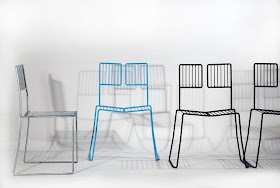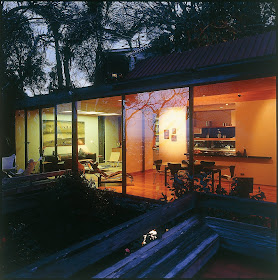No, no. I am not crazy: I do not support holiday decorations being displayed at my local hardware store since September...
Nonetheless, the holidays are around the corner and my hardware store did remind me that last December, I vouched to be pro-active for this year's gift exchange. And that included letting those who will be exchanging with us know that we prefer experiences vs. more stuff. It seems early, but letting them know before they even had a chance to gather/buy objects for us, is key and all part of the “master plan” ;).
Here are some ideas, worth considering this holiday season:
GIFTS
-Offering "Experiences" in the form of a gift certificate or actual ticket, such as:
Classes at the local community college to develop a new interest
Movie ticket
Theme park season pass
Museum pass
Bowling night
Hotel night
Meal at a new restaurant
Treat to an ice cream parlor
My favorite for our kids: A year long subscription to a monthly surprise family activity (activities that I have in mind for the year, depending on our finances, include: kayaking, overnight at hotel with pool, ice skating, hiking to an overnight refuge, trampoline or indoor climbing center, science museum, gold panning in the mountains, crabbing, fishing, overnight on a houseboat, backpacking and overnight in the wilderness, fruit picking, sledding, overnight in a fire lookout, etc...) UPDATE: We call them SFA and inform you of our SFA of the month thru Twitter.
-Offering Services (your time) in the form of coupons, such as:
Hand labor (planting a tree, painting a room for a new baby, fixing a deck, lawn mowing)
Babysitting
Services are great for kids to give (one sibling could take another sibling's chore for a period of time)
-Offering consumables in a
reusable jar (to simplify, pick one project and make a large quantity):
Homemade cookies, cake mix, herbal tea, jam, pickles, sugar/salt scrub,
balm, lemoncello,
toothpowder (with recipe attached)
Or a bulk item (cornichons, olives, maple syrup, toffee pecans, chocolate malt balls).
Homemade candles, soap, and
paper are also great “out of the jar” alternatives.
-Shopping your home: Regifting (and there is nothing wrong with that!) or giving something you already own when you know for a fact that the recipient will appreciate it. I have a dedicated drawer for that purpose, it gets filled and used all year long.
-Buying used at a thrift store or on
Ebay. For the latter, make sure that the item is used by checking the “pre-owned” option in your Ebay search.
-Using the smallest gifts and bulk treats to fill stockings instead of stuffers.
-Selecting gifts that tighten family bonds (family “experiences” or used board games for example).
-Greening Santa: Santa brings only one gift per family member. It comes unwrapped because Santa cares about the environment and his gift is easily spotted among the other (family) wrapped presents. The benefits of the “one special present” go beyond the obvious...equality among children of different financial background, modesty, smaller wish lists, less stress on Santa!
-Avoiding the mall until January: Not only better for your carbon footprint (driving, new stuff purchased), but also your sanity, stress level, creativity and wallet. Challenge yourself to do without!
GIFT WRAPPING:
-
Purchasing or making reusable gift bags from fabric scraps (or redesigned lone socks and pillowcases) sends out a green message to your recipient. The attached tie also eliminates the need for a loose ribbon.
-Purchasing or making
Furoshiki squares (28x28) and learning some easy-to-follow tricks on how to artfully wrap in fabric. The elaborate knots and tucks also eliminates the need for a loose ribbon
-Using a gift to wrap another. A t-shirt, a sweater, a kitchen towel can wrapped just about anything and serve a double duty (a gift and wrapper in one).
-Reusing what you already have, if lacking the previous wrapping alternatives: Papers from your recycling bin (your kids can quickly paint some designs on them), children's artwork, a washed meat wrapper, newspaper or paper bag if you are still allowing these into your home ;).
-Using leaves as gift tags or anything in your recycling bin that can be cut into a small rectangle.
DECORATION:
-Reusing a potted plant that you already have or purchasing one that can become your yearly alternative to the Christmas tree. I use a tall topiary. The first year, it seemed odd (an adjustment), now we can't imagine going back to regular trees.
-Vouching to not buy yet another ornament. We rediscover our holiday decorations every year when we unpack our dedicated crate, and we always have enough!
-Making consumable decorations such as a homemade gingerbread house (with treats available in bulk) or a string of popcorn as garland (feeding it to the birds after the holidays, thanks to Dori and Val for the suggestion) for as long as the kids enjoy participating in the making.
-Using seasonal whole fruit, whole vegetables, yard clippings or leaves to adorn the table.
CARDS:
-Emailing your holiday wishes. Last year, I made plantable cards (it took me a week of work and lots of stamps), this year I will
email our wishes. It's the thought and the content of the message that counts.
-Sending the cards that you do receive for reuse (as mentioned last year) to
St. Jude's Ranch Card Recycling, 100 St. Jude Street, Boulder City, NV 89005. It supports a good cause too!
-Choosing recycled and recyclable materials, if you do choose to send out a card. Keep in mind that photo paper is not recyclable.
TRADITIONS:
-Supporting your Zero Waste efforts with meaningful traditions vs. the wasteful, stressful and complicated activities of the season (Zero Waste not being just about stuff management).
-Being kind to yourself by simplifying your traditions: Consider less cooking, using your everyday china and glasses if your fancy set requires hand-washing, eating out, going for a hike if weather allows.
-Being kind to others by:
1 - Being kind to yourself,
2 - Freeing a parking spot by avoiding the mall ;)
3 - Applying “Acts of Kindness” to your holiday season: participate in a homeless soup kitchen, sing carols in your neighborhood, write a Thank You card to someone whose services you appreciate (your friendly baker for ex.?)...
To hear more about Zero Waste Holidays thru a thick french accent (I hope Santa will think of getting me an accent reduction class), you can check out my recent podcast on
More Hip than Hippie.
I dream of having more than an "almost Zero Waste" Christmas. With simplifying and adequate preparation, I truly believe that my dream can come true. Last year, I dreaded the season, this year I feel ready and excited to face it! Bring it on!
Any more ideas to reduce waste during this coming holiday season?
















































 The house is just as sculptural at the entrance, at the bottom of a very steep driveway. This shot gives you a good view of the central 'canyon', a glass-topped, double-height hallway that drags light into the centre of the home. (The house is located beside a slope to the north that blocks sunlight for a few hours in the winter, hence the design of the glass-topped volume to admit more light).
The house is just as sculptural at the entrance, at the bottom of a very steep driveway. This shot gives you a good view of the central 'canyon', a glass-topped, double-height hallway that drags light into the centre of the home. (The house is located beside a slope to the north that blocks sunlight for a few hours in the winter, hence the design of the glass-topped volume to admit more light).
 The monumental exterior means some of the interiors are just as dramatic. This view shows the inside of the 'canyon' with its glass-topped roof. The timber feature is a 'bridge' across this double-height space.
The monumental exterior means some of the interiors are just as dramatic. This view shows the inside of the 'canyon' with its glass-topped roof. The timber feature is a 'bridge' across this double-height space.  This shot looks from the dining area across to a living room which in turn opens onto the covered exterior sitting area you can see in the first shot of this post. Inside, the material palette has been kept to a simple combination of timber and concrete with slate floors.
This shot looks from the dining area across to a living room which in turn opens onto the covered exterior sitting area you can see in the first shot of this post. Inside, the material palette has been kept to a simple combination of timber and concrete with slate floors. 
